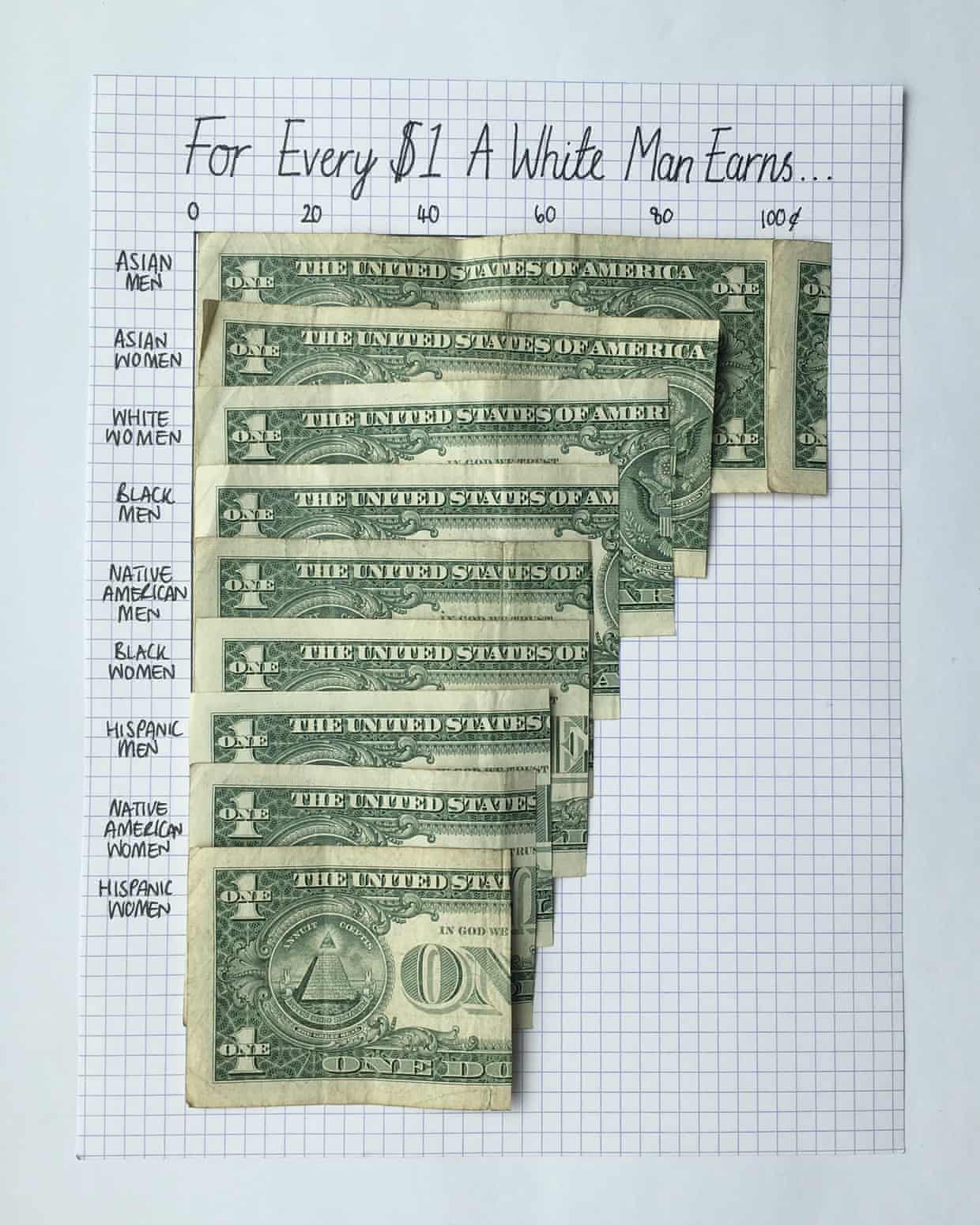by MONA CHALABI & AMANDA HOLPUCH

The wage gap is more than simply one very memorable statistic – it’s a measure of inequality that shrinks and expands according to age, industry and race
A Google employee’s tirade against diversity efforts included a claim that the gender wage gap is a myth, in spite of mountains of data proving otherwise.
But the wage gap is more than simply one very memorable statistic – that a woman in the US earns $0.80 for each $1 a man earns. It is a measure of inequality that shrinks and expands based on variables including age, geography, industry, occupation and race.
Fatima Goss Graves, president and CEO of the National Women’s Law Center, said the wage gap is an “overall measure of workplace inequality”.
“Even when you control for a long list of factors like race, age, union status, education, occupation and industry, there is still a wage gap and you can’t explain it away,” Graves told the Guardian.
Graves said more attention is being paid to the issue, but: “We still have a ways to go and cannot take our eye off the ball.”
Age
Younger women have a narrower pay gap than older women – in 2015, females aged 16-24 earned $0.88 for every $1 their male counterparts earned, while women aged 65 and older earned just $0.74, according to the Bureau of Labor Statistics (BLS). While that might be a promising development for the future, it’s worth remembering that since records began, younger women have always had a smaller pay gap than older women. Since 1979, the pay gap has widened as women have aged and moved through their careers.
Geography
The pay gap also varies considerably across the country. Women in Utah earn $0.55 for every $1 that men in the state earn – in DC, that figure is $0.86, behind Puerto Rico, the only state or territory of the US where women actually out-earn men, by two cents on the dollar.
The Guardian for more